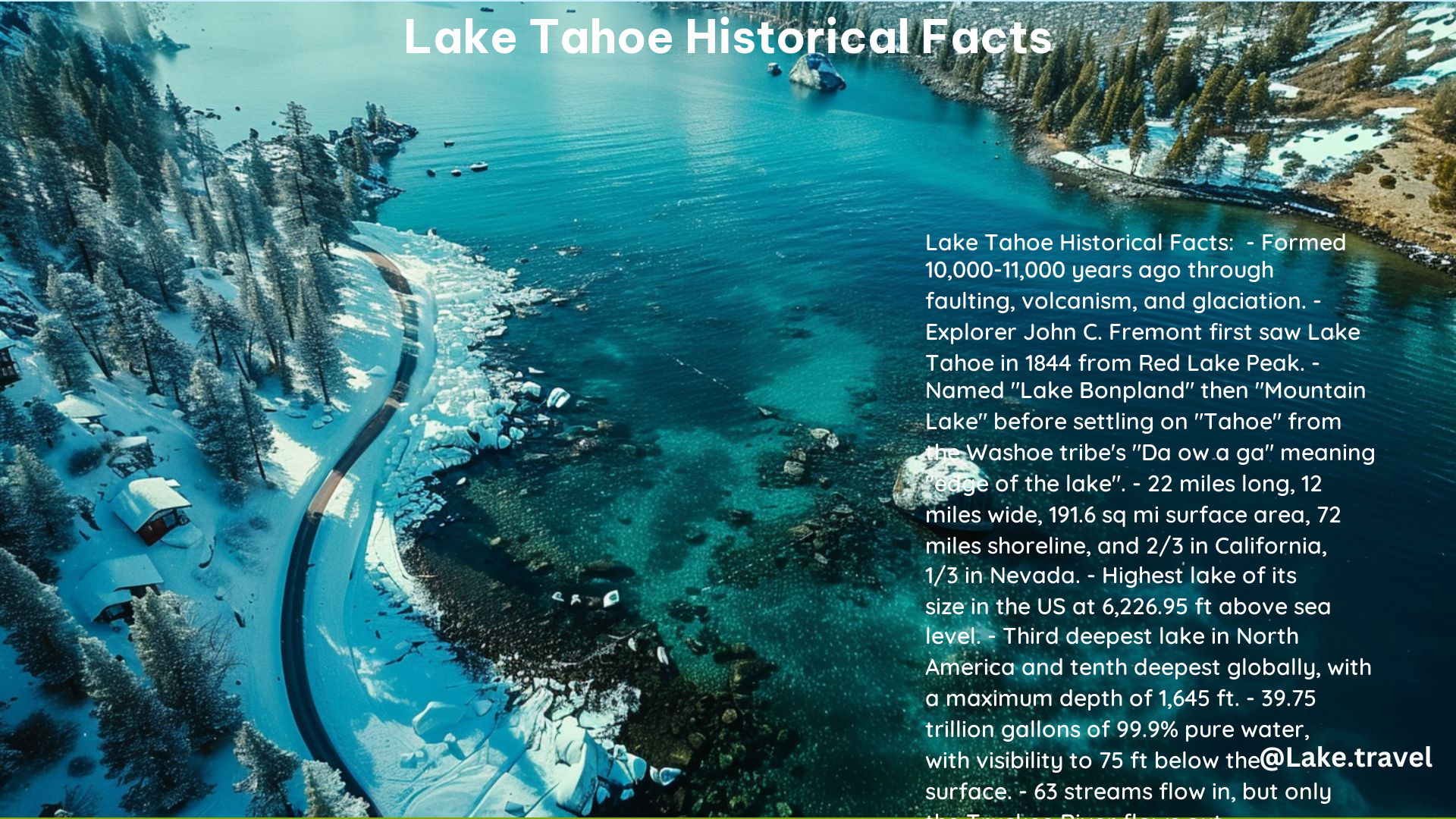Lake Tahoe, located on the border of California and Nevada, has a rich and diverse history spanning thousands of years. From the early presence of Native American tribes to the impact of the Comstock Lode and the development of tourism, this alpine lake has witnessed a fascinating evolution.
Early History and Native American Presence
The Washoe Tribe inhabited the area around Lake Tahoe for nearly 10,000 years, considering the lake sacred and calling it “Da ow a ga,” meaning “Edge of the lake.” In 1844, explorer John C. Fremont discovered Lake Tahoe, initially naming it Lake Bonpland and later Mountain Lake. The name “Tahoe” was eventually adopted from the Washoe Tribe’s name for the lake.
The Gold Rush and Comstock Lode

The California Gold Rush of the 1850s brought a surge of prospectors to the area, with many settling in nearby towns like Truckee. The discovery of the Comstock Lode in Virginia City, Nevada, in 1859 led to a boom in mining and logging activities, with the logging industry significantly impacting the Tahoe Basin’s forests.
Development and Tourism
Between 1860 and 1890, nearly all the trees in the Tahoe Basin were logged to provide wood for the Comstock Lode’s mining operations, leaving lasting scars on the environment. The completion of the transcontinental railroad in 1869 and the Lake Tahoe Railway made the area more accessible, turning it into a popular retreat for the wealthy from San Francisco and other cities. The early 20th century saw the rise of casinos and resorts, with the Ta-Neva-Ho (now Cal-Neva Resort) opening in 1927 and the Tahoe Biltmore following soon after.
Modern Era and Preservation
In the late 19th and early 20th centuries, there was a shift towards preservation and recreation, with efforts to declare Lake Tahoe a national park, although these were ultimately unsuccessful. Wealthy entrepreneur George Whittell Jr. acquired significant land around Lake Tahoe in the 1930s, initially planning to build casinos but eventually deciding to preserve the land, slowing down development on the east side of the lake.
Vikingsholm Castle
Built in 1929 by Lora Josephine Knight, Vikingsholm Castle is a unique example of Scandinavian architecture on the shores of Lake Tahoe. Knight, a wealthy widow, commissioned the castle as a summer home, which now serves as a museum and popular tourist attraction.
Impact of the Comstock Lode
The Comstock Lode’s mining operations led to extensive logging in the Tahoe Basin, causing significant environmental damage that can still be seen today. However, the Comstock Lode also brought significant economic growth to the area, turning Virginia City into a metropolis and developing the region into a center of wealth and culture.
Other Facts
- Lake Tahoe is the largest Alpine lake in North America, covering 191.6 square miles with 72 miles of shoreline. It is 2/3 in California and 1/3 in Nevada, with a surface elevation of 6,226.95 feet above sea level.
- Modern recreational skiing in the Sierra began in 1938 with the opening of Sugar Bowl mountain peaks, which went on to build the first ski lift in California.
References:
– https://www.gotahoenorth.com/lake-tahoe/history-and-facts/historical-tahoe/
– https://visitlaketahoe.com/attractions/a-brief-history-of-tahoe-and-its-people-2/
– https://www.keeptahoeblue.org/about-tahoe/
– https://tahoesignatureproperties.com/history-of-lake-tahoe/
– https://thebluelakeinn.com/tahoe-history-and-fun-facts/
